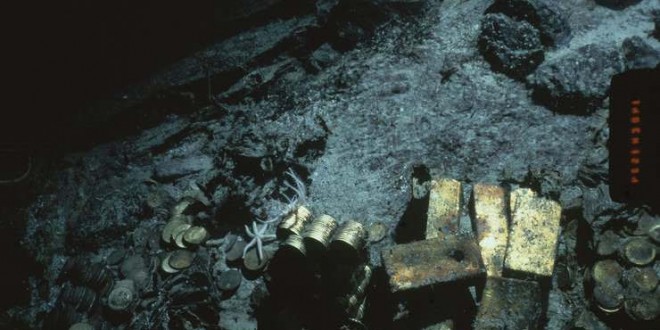Odyssey Marine Exploration Inc. has recovered more than 13,500 silver and gold coins, and gold ingots, or oblong blocks, from the SS Central America.
The Central American ship was a California Gold Rush ship that was caught in a hurricane in 1857 and sank 160 miles off the coast of South Carolina, according to a statement.
Included among passenger items recovered from the Central America are a safe that contained two cotton pieces of clothing wrapped tightly around gold coins, nuggets, and dust, a pouch with 134 gold double eagles, a leather saddlebag with more nuggets, and a small packet filled with paper and sealed with twine.
Photographs of at least 60 passengers have also been discovered. Left at the bottom of the ocean, explorers will explore options until they can figure out how to safely recover them. The photos are known as ambrotypes, a short-lived type of photography that used glass plates.
“Photographs of any mid-19th century Gold Rush miners are rare, and these ambrotypes are the only examples found on any 19th-century shipwreck worldwide,” according to a court report by Odyssey Marine.
The inventories document what Odyssey Marine recovered at the shipwreck from the beginning of the operation on April 15 through June 15. An inventory of operations in the last month should be filed soon.
Agencies/Canadajournal
 Canada Journal – News of the World Articles and videos to bring you the biggest Canadian news stories from across the country every day
Canada Journal – News of the World Articles and videos to bring you the biggest Canadian news stories from across the country every day



